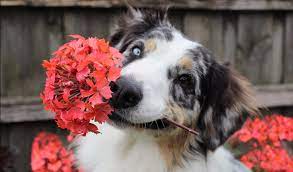Preparing Your Dog for Spring: Grooming and Care Tips as Seasons Change
Share
As the cold, harsh winter gives way to the refreshing and vibrant spring, it's time to prepare your furry friend for the seasonal transition. Spring brings more outdoor activities, longer walks, and unfortunately, more allergens and pests. Here’s how you can ensure your dog is happy, healthy, and well-groomed as you both welcome the warmer weather.
How to Prepare Your Dog for Spring

1. Start with a Thorough Grooming Spring is the perfect time to give your dog a comprehensive grooming session. Many dogs shed their winter coats as the weather warms up, so regular brushing becomes essential. Brushing not only helps remove loose fur and reduce shedding but also stimulates the skin and improves circulation. For breeds with long hair, consider a trip to a professional groomer to trim down their winter coat and make it more manageable for the warmer season.
2. Bath Time A good bath can help remove winter’s accumulated dirt and debris. Use a dog-friendly shampoo to clean their coat and skin, paying special attention to areas that might have been covered by winter clothing or boots. Make sure to thoroughly rinse any shampoo residue, which can cause irritation.
3. Check and Protect Against Pests Springtime means a resurgence of fleas, ticks, and other pests. Check your dog’s coat regularly for any signs of these critters and consider preventative measures such as flea and tick collars, topical applications, or oral medications. Always consult with your veterinarian to choose the most appropriate and safe option for your dog.
4. Paw Care The transition from winter can leave your dog's paws rough and cracked. Examine their paws for any signs of injury or dryness. You can use a dog-specific paw balm to moisturize and soothe their pads. Also, trim the hair between their pads to prevent accumulation of dirt and pollen.

5. Nail Trimming Long nails can make walking uncomfortable for your dog and can even lead to injury. Trim your dog’s nails regularly to keep them at a healthy length. If you’re uncomfortable doing this yourself, a groomer or vet can assist.
6. Ear Cleaning With more time spent outdoors, your dog’s ears are prone to collecting pollen and debris, which can lead to infections. Clean your dog's ears gently with a vet-recommended solution and cotton balls.
7. Hydration and Nutrition As the temperature increases, ensuring your dog stays hydrated is essential. Always have fresh water available, especially during outdoor activities. Additionally, assess your dog’s diet. If they are more active in the spring, they might require more calories. Consult your vet for dietary recommendations.
8. Update Vaccinations and Identification Spring is a good time to ensure all vaccinations are up to date, as dogs are likely to encounter other dogs and wildlife during outdoor excursions. Also, check that your dog’s identification tags and microchip information are current.
9. Allergy Management Just like humans, dogs can suffer from seasonal allergies. Symptoms can include scratching, biting, and skin irritation. If you notice these signs, consult your veterinarian for appropriate allergy management strategies.
10. Plan for Outdoor Adventures With the pleasant weather, it’s a great opportunity to enjoy more outdoor activities with your dog. Whether it’s hiking, swimming, or just playing in the park, ensure your dog is physically ready for increased activity. Start with shorter activities and gradually increase the duration to avoid overexertion.
Preparing Your Dog for Spring
Preparing your dog for spring involves a mix of grooming, health check-ups, and adjustments in their daily care routine. By taking these steps, you ensure that your dog is comfortable, healthy, and ready to enjoy the beauty and fun of the spring season alongside you. Remember, a little preparation can lead to a season full of joyful memories with your furry best friend!



